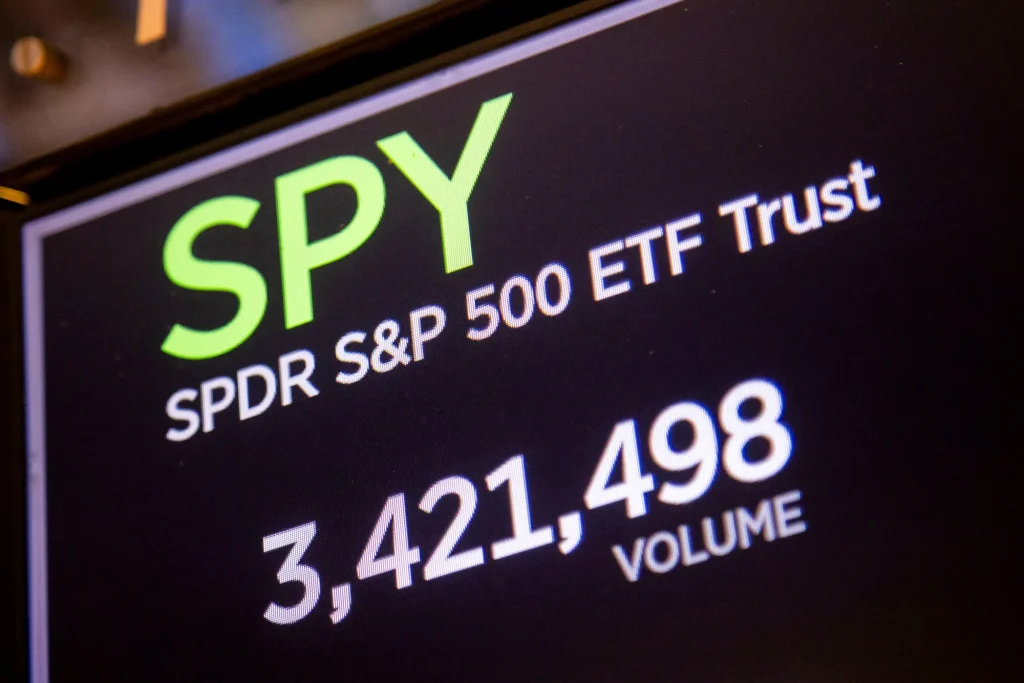Unlocking Wealth: A Comprehensive Guide to SPDR S&P 500 ETF Trust for Savvy Investors

In the ever-evolving landscape of investing, savvy investors are constantly seeking opportunities that promise both stability and growth. Enter the SPDR S&P 500 ETF Trust—a financial powerhouse that has made waves in the investing world. This comprehensive guide is designed to unlock the wealth potential that this esteemed exchange-traded fund offers.
With its diverse exposure to the 500 largest publicly traded companies in the United States, the SPDR S&P 500 ETF Trust stands as a beacon for those aiming to build wealth over time. Whether you’re a seasoned investor or just starting your journey, understanding this ETF’s unique attributes can enhance your portfolio strategy. Join us as we delve deeper into its benefits, performance history, and tips for maximizing your investment. Discover how to navigate the complexities of the market and harness the power of the S&P 500 for your financial future.
Understanding Exchange-Traded Funds (ETFs)
Exchange-Traded Funds (ETFs) are investment vehicles that trade on stock exchanges, combining the diversification of mutual funds with the flexibility of individual stocks. They track indices, sectors, commodities, or other assets, allowing investors to gain broad market exposure through a single transaction. Key features include intraday trading, lower expense ratios (often under 0.5%), and transparency in holdings. For example, ETFs like SPY (S&P 500 tracker) and QQQ (NASDAQ-100 tracker) simplify access to diversified portfolios without requiring direct ownership of individual stocks.
Key Features of SPDR S&P 500 ETF Trust
The SPDR S&P 500 ETF Trust (SPY) is the world’s first and largest ETF, designed to mirror the S&P 500 Index. Its standout features include:
Liquidity: SPY trades over $29 billion daily, ensuring minimal price slippage.
Low Costs: With an expense ratio of 0.0945%, it’s one of the cheapest ways to invest in the S&P 500.
Composition: SPY holds all 500 S&P companies, with top weights in tech giants like Apple (7.1%) and Microsoft (5.6%)。
Dividends: It pays quarterly dividends, yielding ~1.3% annually.
Historical Performance and Returns
Since its 1993 launch, SPY has delivered an average annual return of 10.43%, closely tracking the S&P 500’s growth. Key milestones include:
Dot-com bubble (2000): SPY dropped 9.1% but rebounded with a 10.9% gain in 2004.
Post-2008 recovery: It surged 400% from 2009 to 2023, driven by tech innovation.
Recent performance: In 2024, SPY gained 24.18%, though concerns about overvaluation (P/E ratio of 27.9x) emerged.
Benefits of Investing in SPDR S&P 500 ETF Trust
SPY offers several advantages:
Diversification: Exposure to 500 large-cap U.S. companies reduces single-stock risk.
Passive Strategy: Its index-tracking approach avoids active management fees and biases.
Tax Efficiency: ETFs like SPY minimize capital gains taxes through in-kind redemptions.
Accessibility: Investors can start with small amounts and trade flexibly during market hours.
Risks and Considerations for Investors
Despite its strengths, SPY carries risks:
Market Volatility: The S&P 500’s reliance on tech stocks (31.5% weight) heightens sensitivity to sector downturns.
Valuation Concerns: Elevated P/E ratios and slowing earnings growth could pressure future returns.
Tracking Error: Though minimal (0.02%), fees and liquidity gaps may slightly underperform the index.
Interest Rate Sensitivity: Fed rate hikes often trigger short-term market corrections.
How to Buy and Sell SPDR S&P 500 ETF Trust
Investing in SPY is straightforward:
1. Open a Brokerage Account: Use platforms like Fidelity or Robinhood.
2. Research: Compare fees, liquidity, and tax implications.
3. Place Orders: Choose market orders for instant execution or limit orders for price control.
4. Monitor: Rebalance periodically to align with long-term goals.
Comparing SPDR S&P 500 ETF Trust with Other Investment Options
SPY competes with similar ETFs, each with distinct pros and cons:
Vanguard S&P 500 ETF (VOO): Lower fee (0.03%) but less liquidity.
iShares Core S&P 500 ETF (IVV): Tracks the index equally but has smaller assets under management.
Nasdaq-100 ETFs (QQQ): Higher growth potential but concentrated in tech.
Active Mutual Funds: Higher fees (1-2%) and often underperform indices long-term.
Strategies for Maximizing Returns with SPDR S&P 500 ETF Trust
To optimize SPY investments:
Dollar-Cost Averaging: Invest fixed amounts monthly to mitigate timing risks.
Dividend Reinvestment: Compound returns by automatically buying more shares.
Tax-Loss Harvesting: Offset gains by selling underperforming assets.
Sector rotation: add to undervalued sectors (e.g., add to the healthcare sector during a tech downturn).
Conclusion: Is SPDR S&P 500 ETF Trust Right for You?
SPY suits investors seeking stable, long-term growth with minimal effort. Its low costs, diversification, and historical resilience make it ideal for retirement accounts or core portfolio holdings. However, those wary of market volatility or tech-heavy exposure might prefer blended portfolios with bonds or international ETFs. As Warren Buffett famously advised, “Never bet against America”—and SPY remains a timeless way to ride the U.S. economy’s upward trajectory.